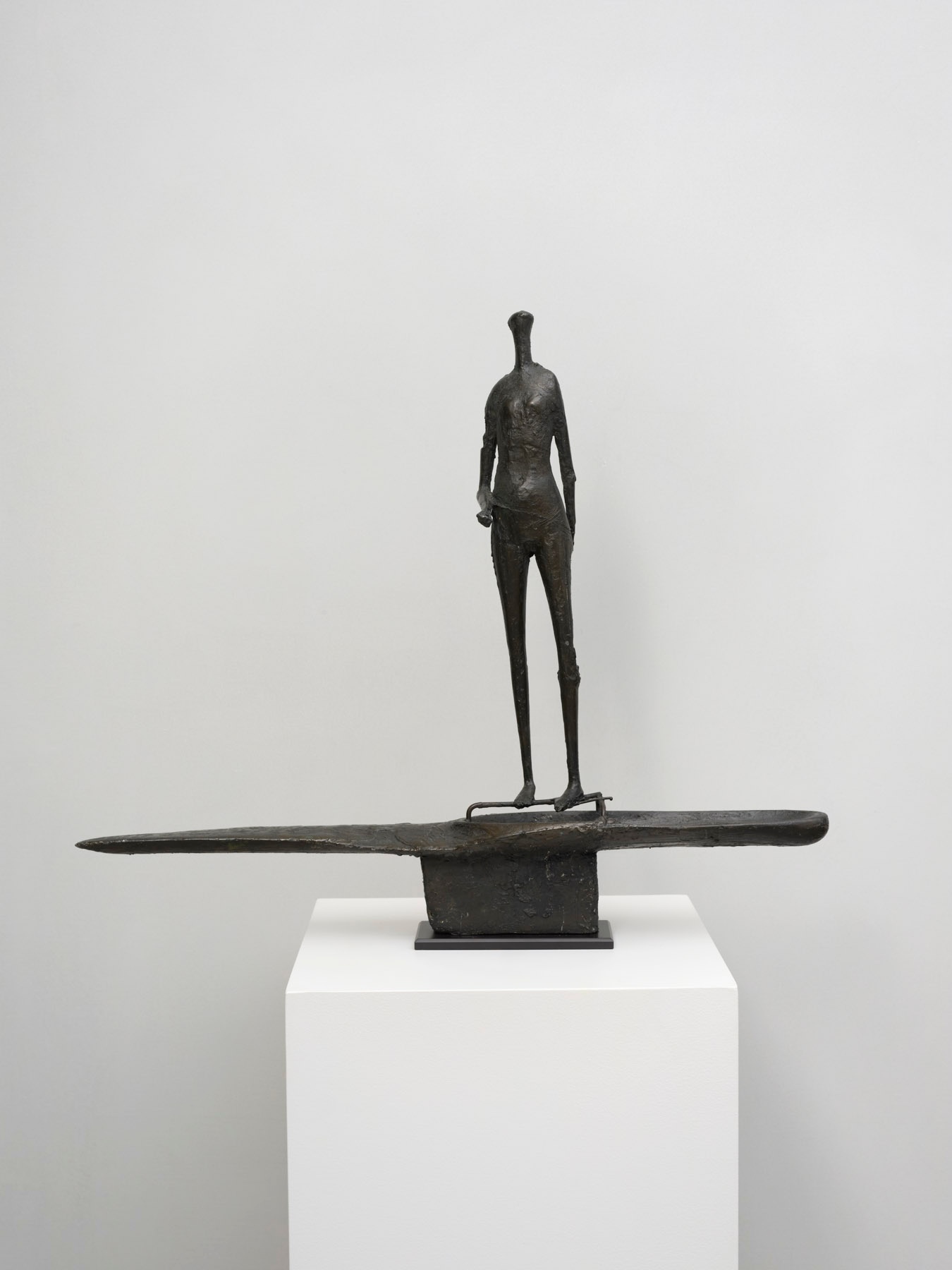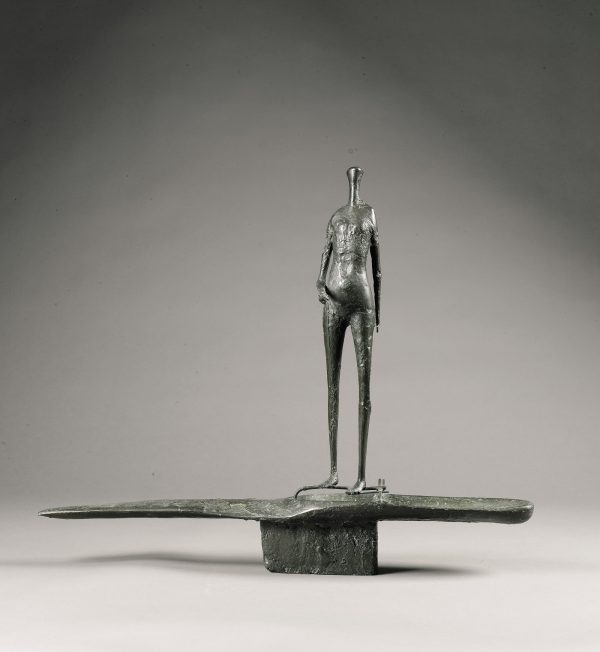Reg Butler
Woman on Boat is among Butler’s early figurative works. Its modernist influences remain apparent – the figure reminiscent of both Alberto Giacometti and Henry Moore’s abstracted human forms. Where Butler’s later figures were extensively worked to a smooth finish and painted to achieve a fleshy verisimilitude, his earlier sculptures retained the veracity of their medium. He seldom refined their roughness, preferring to leave the seams bare and the metal untreated. Made in the decade that saw Butler’s slow transition from abstraction to figuration, Woman on Boat marks a changing tide, the ebbing of purely formal pursuits, and the arrival of the imagined muse to whom he would dedicate his life’s work.
b.1913, Buntingford; d.1981, Berkhamsted
Reg Butler’s preoccupations as a sculptor were out of step with the more modernist pursuits of his time. Where his fellow artists moved progressively away from representation towards abstraction, Butler worked against the current, from the abstract back to the pictorial. Such a return to figuration was largely considered regressive; a gesture of poor aesthetic judgement and personal failing. While his earliest sculptures were perfectly modern in their wiry, tenuous and purely abstract compositions, his later sculptures fleshed out into women. They first appeared as only suggestions of figures, rudimentary and roughly-made, but would become increasingly realistic over time, growing more voluptuous in form and pose to the point of pornography. Like Adam thrown from paradise, women too had corrupted Butler, if only to his critics. That there was something distinctly unsettling to Butler’s female figures only drew further disapproval from the establishment – one reviewer wrote with apparent disappointment of “an eroticism which is not in the least bit sunny.” Butler would briefly return to abstraction in the 60s, but it would not be long before his women beckoned him back.

